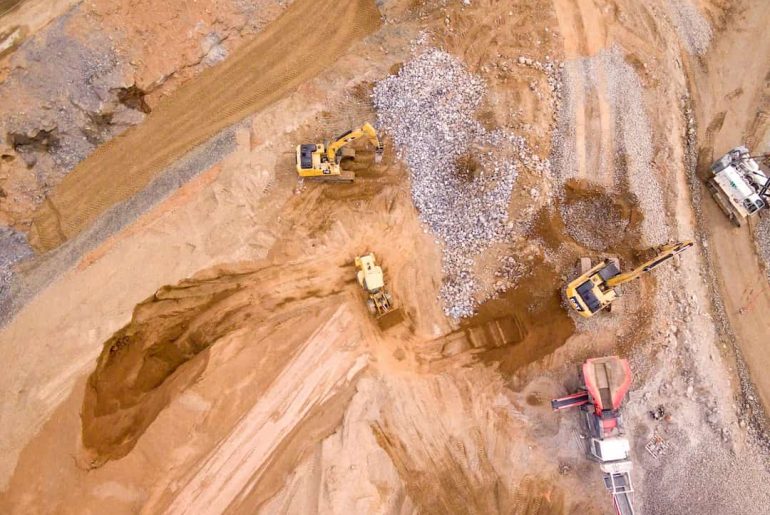Lime is a unique mineral that has served various purposes in different ways for a long time. It comes from limestone and is very useful in many industries. In this article, we will learn about the different types of lime and how they use as building materials. Whether you are interested in construction, farming, or just curious about lime, this article will help you understand its different forms and how they operate.
Quicklime (Calcium Oxide)
What is Quicklime?
There are several types of lime. A vital role is played by quicklime. Quicklime is a type of lime made by heating limestone at high temperatures. This process removes carbon dioxide and leaves a white, vital substance called Quicklime. It is essential to handle Quicklime with care to prevent skin irritation.
How is Quicklime Used?
Construction
Quicklime has existed for a long time in construction. It is mixed with water to make a strong material called mortar or plaster, used to build structures.
Steel Industry
Quicklime plays an essential role in making steel. It helps remove impurities from molten iron and protects the steel from damage.
Water Treatment
Quicklime is used to clean water. It helps get rid of impurities and makes the water safe to use.
Chemical Manufacturing
Quicklime makes many chemicals used in industries and agriculture.
Hydrated Lime (Calcium Hydroxide)
What is Hydrated Lime?
Hydrated lime is another type of lime in the list of types of lime that is made by adding water to Quicklime. This process creates a fine, white powder called hydrated lime. It is safer to handle than Quicklime.
How is Hydrated Lime Used?
Soil Stabilization
Hydrated lime makes soil stronger in construction projects. It improves the soil’s properties and makes it more stable.
Construction
Hydrated lime is added to mortar and concrete to make them stronger and more durable.
Environmental Remediation
Hydrated lime cleans up contaminated soil and waste. It helps remove harmful substances and makes the environment safer.
Flue Gas Desulfurization (FGD)
Hydrated lime reduces air pollution from factories and power plants. It helps remove sulfur dioxide from exhaust gases.
Slaked Lime
Slaked lime, also known as Hydrate of lime, is produced through the process of slaking, which involves combining quicklime with water. It is available as a pure white powder.
When exposed to the atmosphere and in the presence of water, slaked lime absorbs carbonic acid. It is also referred to as calcium hydroxide, calcium hydrate, or lime hydrate.
The combination of quicklime and water results in a slurry material, making slaked lime highly suitable for applications such as mortar, plastering, and as a binder in cement.
Fat Lime
Fat lime, also known as white lime, rich lime, high calcium lime, or pure lime, contains a high proportion of calcium oxide. When water is added to fat lime, it undergoes vigorous slaking and expands to a volume two and a half times greater than that of quicklime.
Fat lime is commonly used for pointing in masonry works, foundations, and thickening masonry walls with surkhi.
Hydraulic Lime
Hydraulic lime, also known as water lime, contains approximately 30 percent silica, 5 percent alumina, and iron oxide. When water is added to it, it sets. Hydraulic lime can be classified as follows:
Eminently Hydraulic
This type of hydraulic lime has a chemical composition similar to Ordinary Portland cement (OPC) and consists of 25 to 39 percent silica and alumina. It is suitable for high-quality mortar works.
Semi-Hydraulic
Semi-hydraulic lime contains 15 to 25 percent silica and alumina. It is used in good quality masonry, brickwork, and mortar, but it is less strong than eminently hydraulic lime.
Non-Hydraulic
Non-hydraulic lime contains less than 15 percent silica and alumina. It undergoes less expansion during slaking. Non-hydraulic lime is accepted for less important works where mortar is required.
Uses of Types Of Lime in Construction
Lime finds several important applications in construction:
Steel manufacturing
Lime is used to remove impurities in the production of steel.
Soil stabilization
Lime is extensively used to stabilize soil for constructing roads, airfields, and building foundations.
Mortar and plastering
Lime slurry is utilized as mortar for masonry work and plastering.
Asphalt additive
Lime is added to asphalt to improve cohesion and enhance resistance to stripping and aging.
Conclusion
Lime is a versatile mineral that uses in many different ways. Quicklime uses in construction, steelmaking, water treatment, and chemical manufacturing. Hydrated lime is vital in soil stabilization, construction, environmental cleanup, and reducing air pollution. By understanding the different types of lime and how they use, we can appreciate this mineral’s many benefits in various industries.






